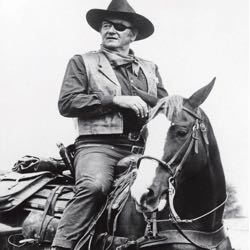(Total Views: 485)
Posted On: 01/17/2020 10:52:21 AM
Post# of 158187

Purpose
To determine the level of off-label cancer therapy use in a population of female breast cancer patients and to establish whether this use was evidence-based.
Methods
A study was conducted by sampling Cerner’s data warehouse for all women diagnosed with breast cancer between January 2000 and June 2009 who received at least one cancer therapy approved by the US-FDA during the study period. Drug encounters were considered off-label if the circumstances of use did not match the age or medical diagnoses specified on the product label at the time of study. The level of evidence for the use of these drugs in a breast cancer setting was evaluated from randomized phase III trials using a tiered approach.
Results
The study included 2,663 women with a median age of 59 years. A total of 1,636 off-label encounters were recorded, representing 13.0% of all encounters. Of the 65 cancer therapies investigated, 55.4% were prescribed off-label. The drugs with the highest off-label use were, in a descending order, vinorelbine, carboplatin, bevacizumab, leuprolide, liposomal doxorubicin and cisplatin. Most off-label encounters were evidence-based and more likely to be associated with private insurance coverage, younger age, ethnicities other than Caucasian, smaller treatment centres and drugs with limited labeled indications that have a longer market history.
Conclusions
Off-label prescribing is common practice in oncology and is an integral component of breast cancer treatment strategies. While this practice tends to be associated with specific socio-demographic factors and disease characteristics, the majority of off-label encounters appear to be evidence-based.
https://www.ncbi.nlm.nih.gov/pmc/articles/PMC4422830/
To determine the level of off-label cancer therapy use in a population of female breast cancer patients and to establish whether this use was evidence-based.
Methods
A study was conducted by sampling Cerner’s data warehouse for all women diagnosed with breast cancer between January 2000 and June 2009 who received at least one cancer therapy approved by the US-FDA during the study period. Drug encounters were considered off-label if the circumstances of use did not match the age or medical diagnoses specified on the product label at the time of study. The level of evidence for the use of these drugs in a breast cancer setting was evaluated from randomized phase III trials using a tiered approach.
Results
The study included 2,663 women with a median age of 59 years. A total of 1,636 off-label encounters were recorded, representing 13.0% of all encounters. Of the 65 cancer therapies investigated, 55.4% were prescribed off-label. The drugs with the highest off-label use were, in a descending order, vinorelbine, carboplatin, bevacizumab, leuprolide, liposomal doxorubicin and cisplatin. Most off-label encounters were evidence-based and more likely to be associated with private insurance coverage, younger age, ethnicities other than Caucasian, smaller treatment centres and drugs with limited labeled indications that have a longer market history.
Conclusions
Off-label prescribing is common practice in oncology and is an integral component of breast cancer treatment strategies. While this practice tends to be associated with specific socio-demographic factors and disease characteristics, the majority of off-label encounters appear to be evidence-based.
https://www.ncbi.nlm.nih.gov/pmc/articles/PMC4422830/
